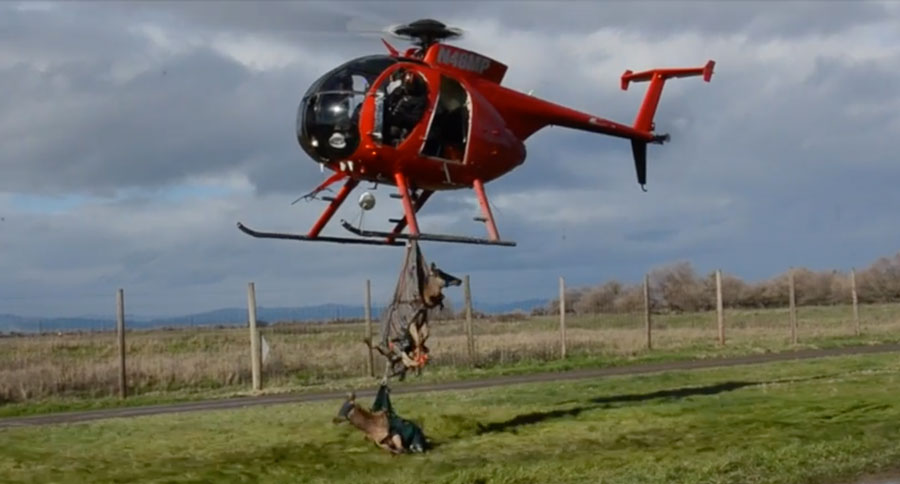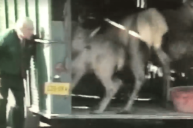Have you ever wondered how wildlife officials were able to relocate an animal as big as an elk?
At one point, tule elk were assumed extinct as a result of gold mining. They're very much still here, though, and the California Department of Fish and Wildlife has made serious efforts to manage herds.
Effective wildlife management can often entail the relocation of select animals, which is what we see in the following video.
The CDFW recently initiated a large-scale effort, which required dozens of officials to move 60 tule elk from the San Luis National Wildlife Refuge near Merced County to the Carrizo Plain National Monument in San Luis Obispo County.
The 200-mile transport required firing a net gun from a helicopter. Tule elk are North America's smallest wapiti, but are still magnificent animals, as cows can weigh up to 400 pounds. So, needless to say, moving them is no easy task.
"These are big, strong animals. It's not work for the faint of heart," CDFW public information officer Peter Tira told the San Luis Obispo Tribune. "Animal safety is the No. 1 Priority."
Once CFWD officials netted the elk, they either approached them on the ground, tied them up and blindfolded them, or they simply lifted them with a rope tied to the helicopter.
"You've got to tie them up or they're literally break-your-bones kicking you," CDFW information officer Harry Morse told the San Luis Obispo Tribune.
Watch the video below:
After wildlife veterinarians and biologists examined all the animals, they placed a tracking device in six of them to track movements.
Wildlife department officials then loaded the elk into a truck trailer, which took them to their new home.
"We had to push some of them out of the back of the truck, literally," Morse said. "And some of them took off into the hills."
California's native tule elk were down to one herd back in the 1870s and have since grown to about 22 herds of roughly 6,000.
NEXT: FLUSHING AND FALLING: AN UPLAND SEASON OF UPS AND DOWNS
WATCH
https://rumble.com/embed/u7gve.v3trbv/




